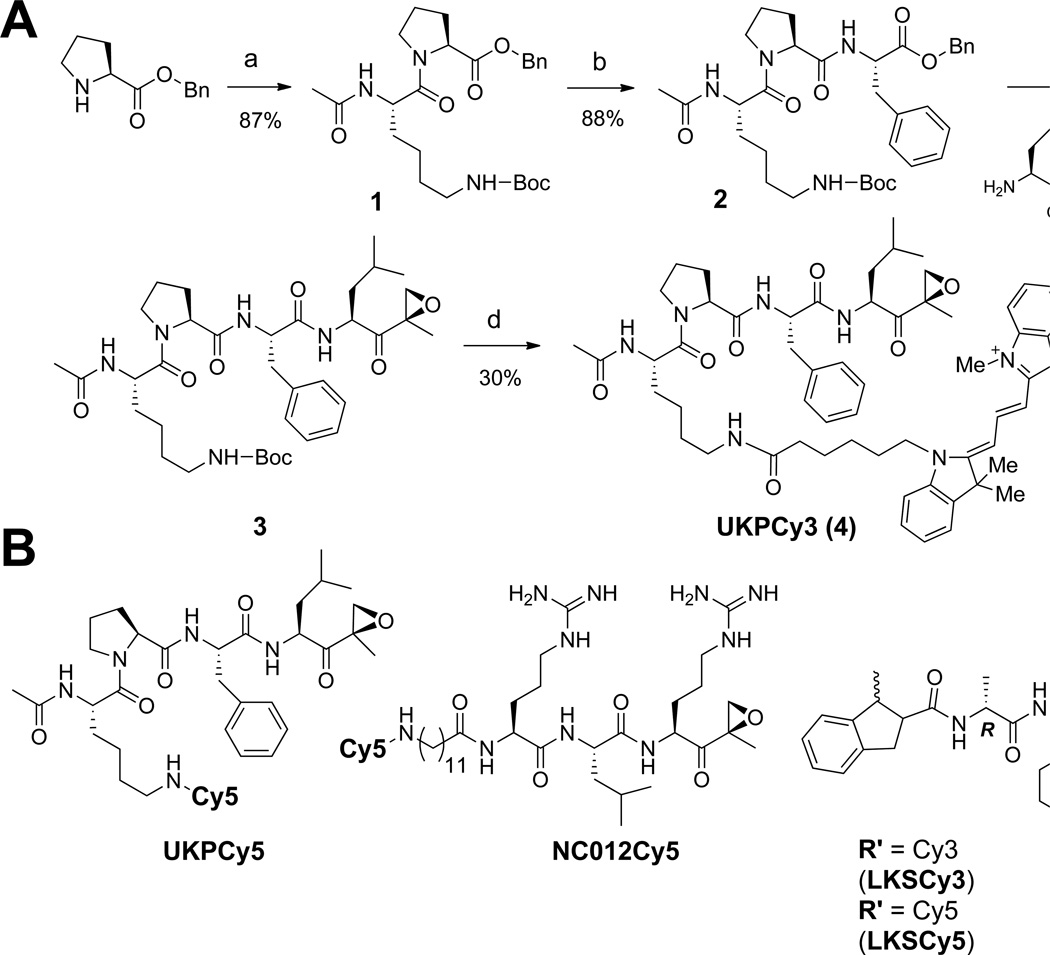Fig. 3.
Fluorescent probes used for our FRET-based approach. A. Synthetic scheme for the preparation of UKPCy3, which is derived from YU-102, a β1/β1i-selective peptide epoxyketone.30 a. Ac-Lys(Boc)-OH, TBTU, DIPEA, CH2Cl2, rt, 2h; b. 1) H2/Pd, MeOH, rt, 2h, 2) H-Phe-OBn, TBTU, DIPEA, CH2Cl2, rt, 2h; c. 1) H2/Pd, MeOH, rt, 2h, 2) TBTU, DIPEA, CH2Cl2, rt, 2h; d. 1) 20% TFA, CH2Cl2, rt, 15 min, 2) Cy3-NHS ester, TBTU, DIPEA, CH2Cl2, rt, 2h. B. Structures of additional FRET probes. LKSCy3 and LKSCy5 are derived from IPSI that targets β5/β5i.32 NC012Cy5 is derived from NC012, which selectively targets β2/β2i.28.

